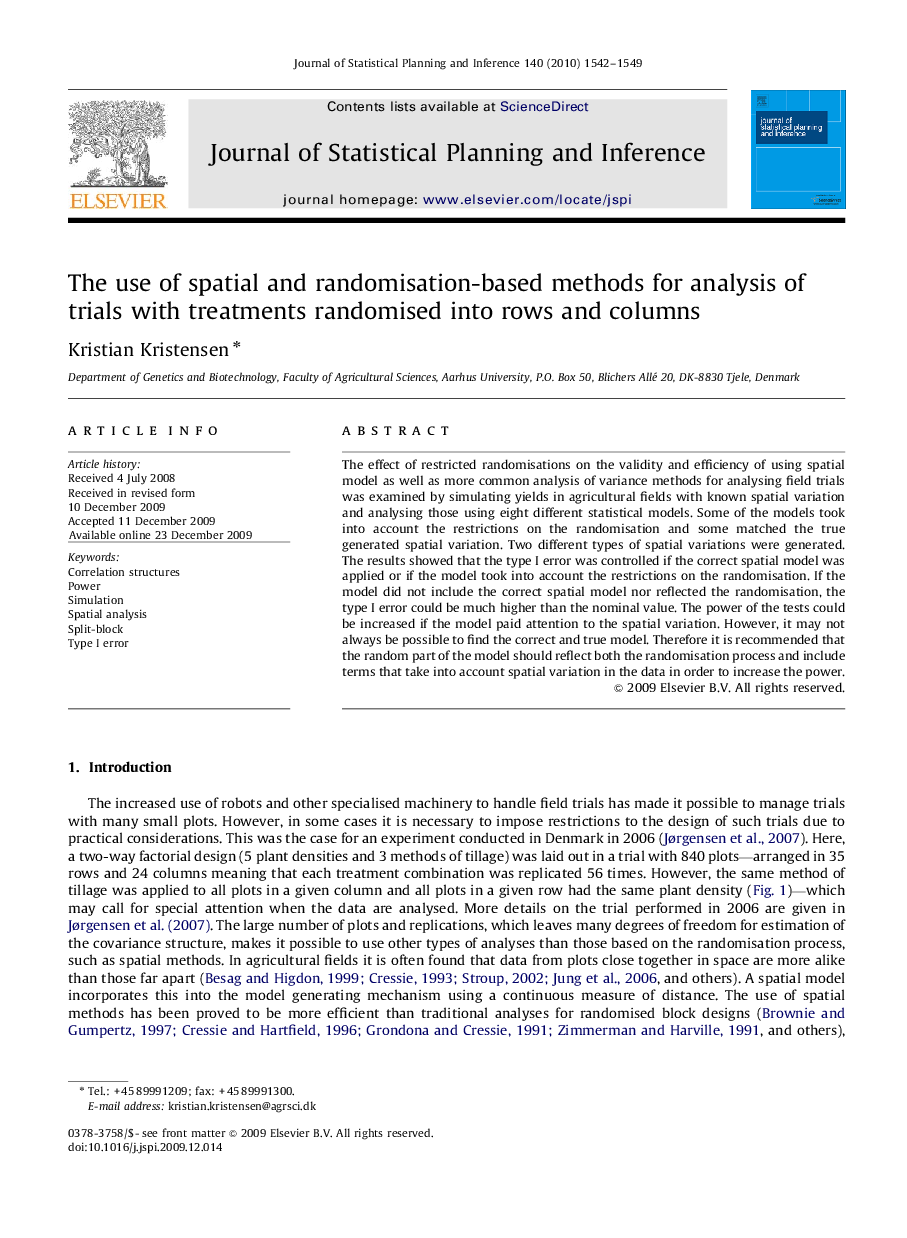| Article ID | Journal | Published Year | Pages | File Type |
|---|---|---|---|---|
| 1150349 | Journal of Statistical Planning and Inference | 2010 | 8 Pages |
Abstract
The effect of restricted randomisations on the validity and efficiency of using spatial model as well as more common analysis of variance methods for analysing field trials was examined by simulating yields in agricultural fields with known spatial variation and analysing those using eight different statistical models. Some of the models took into account the restrictions on the randomisation and some matched the true generated spatial variation. Two different types of spatial variations were generated. The results showed that the type I error was controlled if the correct spatial model was applied or if the model took into account the restrictions on the randomisation. If the model did not include the correct spatial model nor reflected the randomisation, the type I error could be much higher than the nominal value. The power of the tests could be increased if the model paid attention to the spatial variation. However, it may not always be possible to find the correct and true model. Therefore it is recommended that the random part of the model should reflect both the randomisation process and include terms that take into account spatial variation in the data in order to increase the power.
Related Topics
Physical Sciences and Engineering
Mathematics
Applied Mathematics
Authors
Kristian Kristensen,
